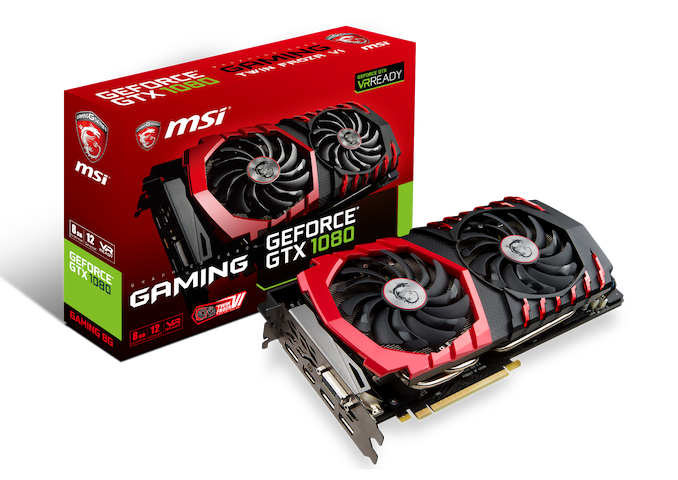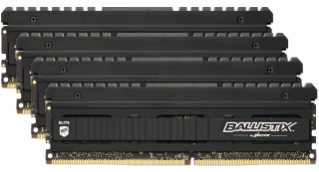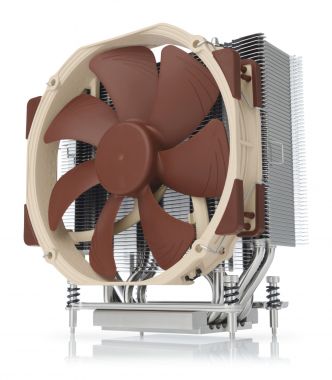The MSI MPG Z690 Carbon WIFI (DDR5) Motherboard Review: A Decent Mid-Ranged Z690
by Gavin Bonshor on September 8, 2022 8:00 AM ESTBoard Features
The MPG Z690 Carbon WIFI is a mid-ranged ATX motherboard that represents MSI's Performance Gaming series. As expected from a motherboard aimed at gamers, it has a relatively premium feature set that conforms to what other companies offer in the mid-range with their Z690 offerings. The MSI MPG Z690 Carbon WIFI has a good variety of storage options, including three PCIe 4.0 x4 M.2, one PCIe 4.0 x4/SATA M.2, and one PCIe 3.0 x4/SATA slot. For SATA, MSI includes a total of six SATA ports, four of which are driven by the chipset and support RAID 0, 1, 5, and 10 arrays, while the other two are powered by an ASMedia SATA controller.
In terms of PCIe support, the Z690 Carbon WIFI has three full-length PCIe slots in total, two of which support PCIe 5.0 x16/x0 and x8/x8, while the third slot is electronically locked to PCIe 3.0 x4. MSI also includes four memory slots with support for up to DDR5-6666 with 1DPC (1R), but broadly support is limited to DDR5-5600 with all the memory slots populated. The MPG Z690 Carbon WIFI can also accommodate up to 128 GB.
Focusing on cooling support, the MSI MPG Z690 Carbon WIFI has eight 4-pin cooling headers in total. These consist of one dedicated to a CPU fan, one dedicated to a water pump, and six dedicated to chassis fans.
| MSI MPG Z690 Carbon WIFI Motherboard | |||
| Warranty Period | 3 Years | ||
| Product Page | Link | ||
| Price (MSRP/Amazon) | $400/$350 | ||
| Size | ATX | ||
| CPU Interface | LGA1700 | ||
| Chipset | Intel Z690 | ||
| Memory Slots (DDR4) | Four DDR5 Supporting 128 GB Dual-Channel Up to DDR5-6666 |
||
| Video Outputs | 1 x HDMI 2.1 1 x DisplayPort 1.4 |
||
| Network Connectivity | 1 x Intel I225-V 2.5 GbE Intel AX211 Wi-Fi 6E |
||
| Onboard Audio | Realtek ALC4080 | ||
| PCIe Slots for Graphics (from CPU) | 2 x PCIe 5.0 x16 (x16/x0, x8/x8) | ||
| PCIe Slots for Other (from PCH) | 1 x PCIe 3.0 (x4) | ||
| Onboard SATA | Four, RAID 0/1/5/10 (Z690) Two, ASMedia ASM1061 |
||
| Onboard M.2 | 3 x PCIe 4.0 x4 1 x PCIe 4.0 x4/SATA 1 x PCIe 3.0 x4/SATA |
||
| Onboard U.2 | N/A | ||
| Thunderbolt 4 (40 Gbps) | N/A | ||
| USB 3.2 (20 Gbps) | 1 x USB Type-C (Rear panel) | ||
| USB 3.2 (10 Gbps) | 5 x USB Type-A (Rear panel) 1 x USB Type-C (One header) |
||
| USB 3.1 (5 Gbps) | 2 x USB Type-A (One header) | ||
| USB 2.0 | 4 x USB Type-A (Rear panel) 4 x USB Type-A (Two headers) |
||
| Power Connectors | 1 x 24-pin Motherboard 2 x 8-pin CPU |
||
| Fan Headers | 1 x 4-pin CPU 1 x 4-pin Water pump 6 x 4-pin Chassis |
||
| IO Panel | 2 x Antenna Ports (Intel) 1 x USB 3.2 G2x2 Type-C 5 x USB 3.2 G2 Type-A 4 x USB 2.0 Type-A 1 x RJ45 (Intel) 1 x HDMI 2.1 Output 1 x DisplayPort 1.4 Output 5 x 3.5 mm Audio jacks (Realtek) 1 x S/PDIF Optical output (Realtek) 1 x BIOS Flashback button |
||
The MPG Z690 Carbon WIFI is using many features of Intel's Z690 chipset including native support for USB 3.2 G2x2 Type-C which MSI includes one of these on the rear panel, along with a header for an additional USB 3.2 G2 Type-C port. Also on the rear panel are five USB 3.2 G2 Type-A and four USB 2.0 ports, as well as an HDMI 2.1 and DisplayPort 1.4 video output pairing for users planning on leveraging Intel's UHD graphics.
In regards to networking, MSI has opted for a mid-ranged Intel I225-V 2.5 GbE controller with an Intel AX211 Wi-Fi 6E CNVi providing both access to the 6 GHz band and support for BT 5.2 devices.
Test Bed
With some of the nuances with Intel's Alder Lake processors including the new P and E-cores, our policy is to see if the system gives an automatic option to increase the power limits of the processor. If it does, we select the liquid cooling option. If it does not, we do not change the defaults.
| Test Setup | |||
| Processor | Intel Core i9-12900K, 125 W, $589 8P + 8E Cores, 24 Threads 3.2 GHz (5.2 GHz P-Core Turbo) |
||
| Motherboard | MSI MPG Z690 Carbon WIFI (BIOS 7D30v14) | ||
| Cooling | ASUS ROG Ryujin II 360mm AIO | ||
| Power Supply | Corsair HX850 80Plus Platinum 850 W | ||
| Memory | Corsair Dominator Platinum RGB DDR5-4800 CL 14-14-14-34 2T (2 x 16 GB) | ||
| Video Card | MSI GTX 1080 (1178/1279 Boost) | ||
| Hard Drive | Crucial MX300 1TB | ||
| Case | Corsair Crystal 680X | ||
| Operating System | Windows 10 Pro 64-bit: Build 21H2 | ||
We must also thank the following:


















17 Comments
View All Comments
Gich - Thursday, September 8, 2022 - link
Those prices are insane.Mid-range? Full-theft more like it.
Threska - Thursday, September 8, 2022 - link
$350-400 is the new normal. It's like complaining eggs are no longer a quarter for a dozen (1930).shabby - Thursday, September 8, 2022 - link
No it's not, that's like saying a $500 cpu is middle of the pack.Samus - Thursday, September 8, 2022 - link
$400 isn't normal. I've never spent more than $250 on a motherboard (and that was the Asus P6T X58 Deluxe almost 15 years ago)Mainstream Z690 boards are ~$200. You get diminishing returns beyond that, especially if you don't plan to overclock. Most people would be better off with the $250 MSI Tomahawk Z690 over the MPG Z690 as they are virtually identical and the $100-$150 price difference can be better allocated on other components such as CPU or GPU.
Paying twice as much for a motherboard is like paying twice as much for RAM, the cost:benefit is among the worst of any other component.
Duwelon - Thursday, September 8, 2022 - link
Has anyone else noticed that the cheapest boards are generally ugly but very expensive boards are generally cleaner looking and match commonly sought after color schemes? Been a trend for awhile now.Duwelon - Thursday, September 8, 2022 - link
I mean this "Carbon" skin that MSI is using probably costs them less than $5 compared to their cheapest option. People avoid the cheaper options out of vanity when they have 95% or more of the same features, and motherboard makers know this, hence they make their lowest end SKUs butt ugly.thestryker - Friday, September 9, 2022 - link
FWIW I was thinking similarly as I had that same board, but adding inflation in that board would be around $350 today so it's right in line with these offerings. This *does* constitute the new midrange, but I do agree that you need to evaluate what you're doing with your system and pick off of that since many cheaper boards are great.Emyof4D - Saturday, September 10, 2022 - link
I might be misinterpreting, but think the point was that it was hardly a "mid-range" board at the time. X58 was already the enthusiast version of the chips, so even a "basic" X58 board was fairly high end. A more comparable board might be a MSI P55-GD80 for socket 1156, which was about 175 back when it launched.timecop1818 - Saturday, September 10, 2022 - link
Lol no. And this board is a fucking scam. MSI's own PRO Z690-A is < $200 almost anywhere and has exactly the same feature set as this scam, minus dumb RGB shite. $200 is about the max I'd pay for a Z-series board, and 100-150 max for B-series. Anything > $400 is ridiculous.Samus - Monday, September 12, 2022 - link
The VRM's are slightly different on the Pro (14 phase) but the Tomahawk and the MPG both have 18+1 (the MPG is technically 20 phase I guess -_-) and the Tomahawk is $150 less. So if you want high boost for prolonged periods on a hungry chip both boards will probably perform identically.The Pro-A, however, would probably be the board I get because I don't see myself getting a K CPU anyway. They are all so ridiculously fast and most demanding loads only need momentary boost clocks (like extracting a RAR or loading a game) that any Z690 board will have a decent enough VRM package to comply before the power stage heats up and scales the clock back. In the case of the boards with really cheap components (like the Gigabyte Aorus Ultra Lite with the 10+2+1) you might never hit Boost 2.0 even though they claim its for a laughably high 105A while many 14+ phase can't even do 60A. Potential power delivery doesn't equal constant power delivery.